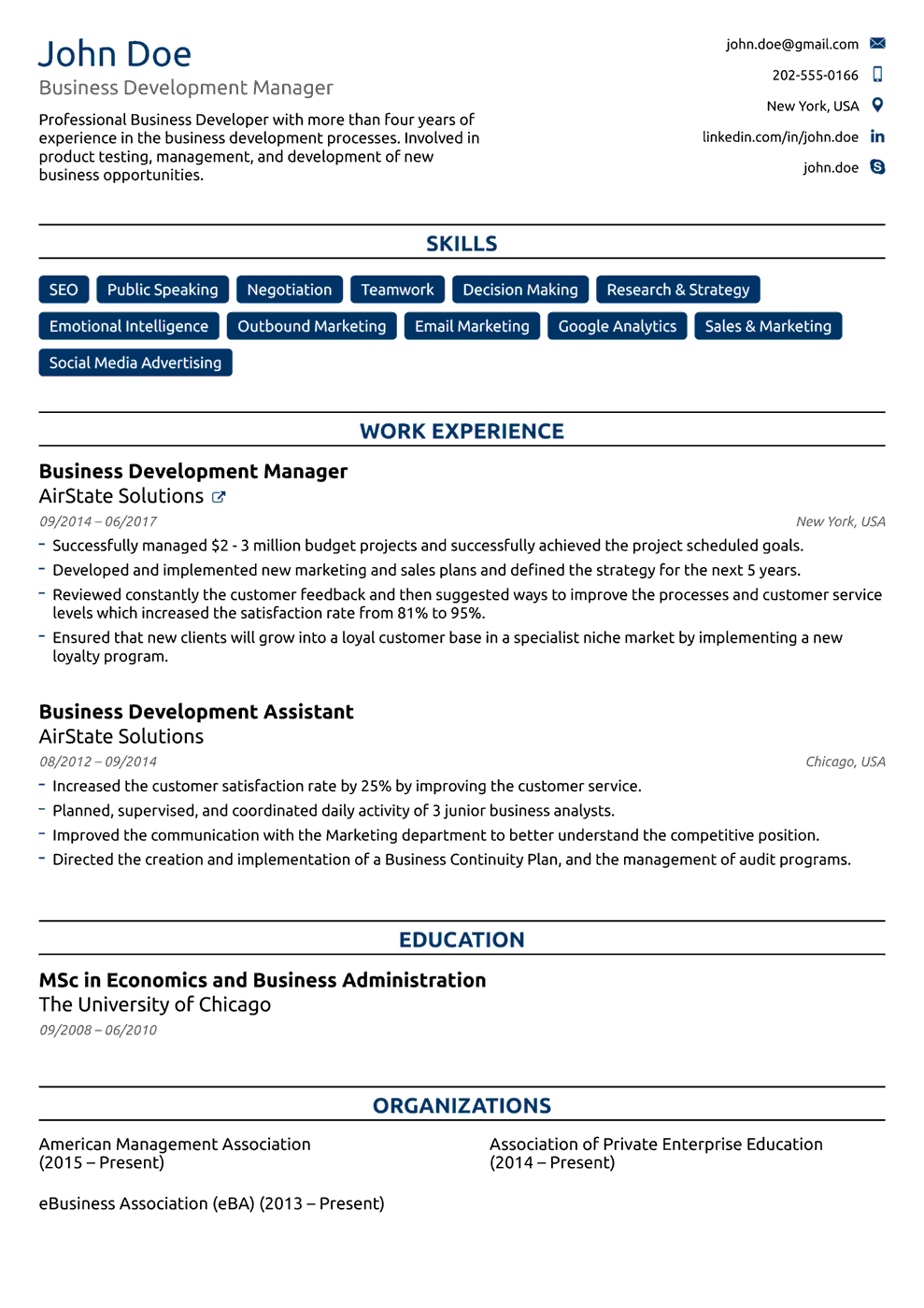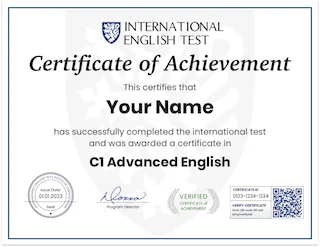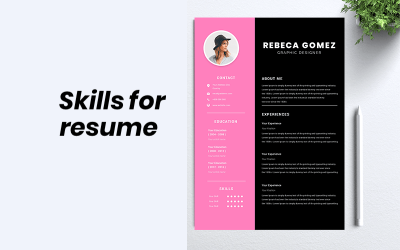The presentation of your resume holds significance. Hiring managers typically focus on the appearance of your resume before delving into its content.
If your resume appears messy and overcrowded, it may leave a negative first impression. Therefore, it’s essential to consider the best resume formats and choose the one that suits you best.
What is a resume format?
The term “resume format” can be perplexing because it is used in various ways by different sources. Essentially, a resume format refers to the specific structure of your resume, encompassing the arrangement of resume sections, the writing style of the employment history, and the level of emphasis given to each section. For instance, some resume formats may place a strong focus on the skills section, while others may highlight the work history as the main focal point.
What is your English level?
Find out your A1 A2 B1 B2 C1 C2 level of English with our online test and receive your English certificate.
3 main types of resume formats
Luckily when it comes to choosing a resume format, your choices are already narrowed down to three main types:
- Chronological
- Functional
- Combination
Every resume format has its own distinct benefits, and there is no definitive “best” template. Depending on the job position, company, or even the country you are applying to, you might consider crafting different versions of your resume in various formats. An online resume builder can greatly simplify the process, allowing you to easily rearrange sections and transition between formats seamlessly.
Chronological format
The reverse chronological format, which has been a longstanding standard for resumes, remains popular for good reasons. It is especially effective for showcasing employment history, particularly in traditional industries where the conventional path of career progression is valued. The term “reverse” refers to starting with the most recent job and working backward, listing relevant experiences from the past ten years. While not all experiences within that timeframe need to be included (e.g., server experience on an architect resume), it’s essential to be mindful of any employment gaps, as the chronological format can make them more noticeable to hiring managers.
Functional resume format
The functional resume comes to the rescue in jobs where specialized skills carry more weight than employment history. This format allows you to showcase your expertise prominently under the “Experience” section at the beginning of your resume. Unlike a chronological resume that emphasizes past accomplishments, the functional format focuses on the skills and specialized knowledge you possess currently.
Thanks to its flexibility, the functional resume is an excellent option for various job scenarios. Skilled tradespeople, freelancers, gig workers, students, and recent graduates can all benefit from highlighting their strengths without the need to categorize them solely under previous positions, especially if they have numerous or repetitive roles.
Combination resume format
The combined format, also known as a combination format, seamlessly blends the features of both chronological and functional formats. Its adoption is often influenced by the candidate’s specific job search requirements. For instance, a freelancer aiming to transition into a full-time role might prefer to showcase top skills first and then present the Employment History section to demonstrate their adaptability to similar work environments as the prospective employer.
Many professional resume writers use a combination style while still referring to it as a reverse chronological format. Prioritizing key skills at the top is a wise strategy for numerous job roles, and the work experience section remains relevant and can usually be accommodated on the first page.
The combined resume provides a dual advantage for job seekers: it draws the hiring manager’s attention to strengths while also offering the expected employment history information for traditional companies. It proves to be a suitable choice for candidates whose experience aligns well with a functional resume but are uncertain about its reception, ensuring a balanced presentation of their qualifications.
Best format for freshers
If you’ve recently graduated or are about to graduate, you might be curious about the ideal resume format for freshers. Considering your limited work experience, the focus should be on highlighting your education and the knowledge acquired during your studies.
In the qualifications section, provide specific details about your academic achievements and the modules you covered to give the hiring manager a comprehensive understanding of your skills and expertise. Emphasize the most relevant aspects of your coursework and demonstrate how they can be applied to the position you are seeking. To maintain clarity and conciseness, it is advisable to keep the resume format for freshers to just one page, as excessive length is unnecessary for a graduate resume.
Choosing the best resume format
Below are our top 5 recommendations for selecting a resume format and utilizing a resume builder effectively:
- Opt for a resume format that aligns with the tone and branding of the company you are applying to.
- When uncertain, it’s safer to choose a simpler, more traditional template rather than a more unconventional one.
- Ensure your template strikes a healthy balance between white space and text to avoid overwhelming the reader with information.
- Identify the most crucial resume sections based on your experience and select a format that emphasizes those sections.
- Be open to rearranging sections or experimenting with different formats to find the version of your resume that works best for you.
What is your English level?
Find out your A1 A2 B1 B2 C1 C2 level of English with our online test and receive your English certificate.
Which resume format 2023
In the end, there is no definitive “correct” resume format; the choice depends on your experience, industry, and the potential employer’s preferences. To determine the right format for your 2023 resume, consider asking yourself the following questions:
- Do I possess a unique skill set that I want to highlight immediately to the employer?
- Am I transitioning to a different career or job role where I lack relevant work experience?
- Have I acquired significant and diverse skills within just one or two positions?
- Will my prospective employer appreciate a fresh and straightforward approach to resume formatting?
If you answered YES to any of the above questions, you might want to consider switching from a chronological format to a functional or combined one.
While combined resumes are expected to gain popularity in the upcoming years, a nontraditional format may not suit everyone. Situations where a chronological format is likely the best choice include:
- Your knowledge from previous workplaces is more relevant than standalone skills.
- You are applying to a large company with a traditional organizational structure.
- Your competitors are likely to have impressive career paths with renowned employers.
- You possess a substantial amount of work history directly related to the position you are seeking.
- You have worked at other companies similar to your prospective employer.
Basic Resume Format

Recent Graduate Resume Format

Modern Resume Format

Are you C1 Advanced English?
Get your C1 Advanced English certificate now!
✓ Add your certificate to your resume
⭐ ⭐ ⭐ ⭐ ⭐
I am Nilay, an experienced English Language Assessment Director at the International English Test, where I have been working full-time since February 2020. I specialize in helping people worldwide validate their English proficiency through comprehensive assessments and certifications.
Before joining the International English Test, I worked as a self-employed English Language Assessment Consultant from January 2015 to December 2019. During this time, I assisted companies and individuals in improving their language skills, helping them achieve their academic and professional goals.
I hold a degree in Engineering and have also studied at Shafston International College in Australia. My educational background has equipped me with the tools to make a meaningful impact in the field of English language learning. Additionally, I enjoy sharing my expertise through articles that explore effective teaching methods and language assessment strategies, contributing to the International English Test and the broader assessment community.





